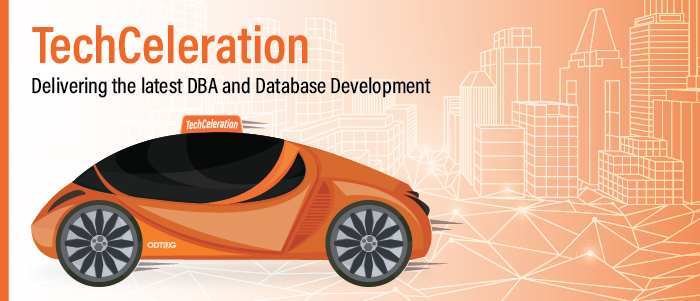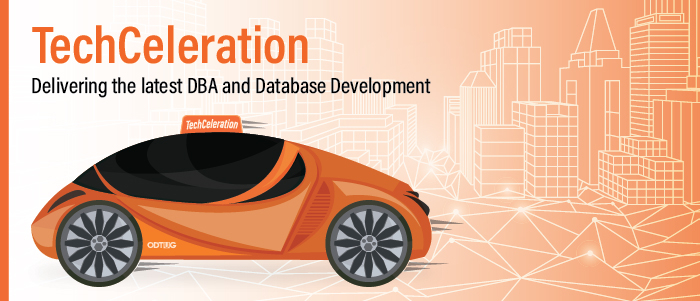Even though Oracle OpenWorld 2019 ended just a few weeks ago, it’s taken me that much time to digest the voluminous announcements on myriad technology fronts and condense those down to what I believe are five of the key takeaways for Oracle database professionals, especially those of us who (like me) are endeavoring to make the transition from DBA to Enterprise Data Architect (EDA).
One: Always Free Autonomous Database
One of the biggest impediments to adopting a lot of Oracle technology has always been the cost of licensing, so it was a big surprise to hear a word at OOW19 I’ve hardly ever heard before from my Oracle sales reps: free.
Okay, I’m exaggerating a bit: Application Express (APEX) has always been free, and the latest Oracle 18c Express Edition certainly does offer quite a bit of power at no cost. But all of that technology does take some time to procure and configure, and what was really missing was an easy-to-use, virtually configure-less option.
So Larry Ellison’s “one more thing” announcement at his first OOW19 keynote was a welcome surprise: A completely free tier of Oracle database technology that runs within Autonomous Transaction Processing (ATP) database instances—actually, two of them!—running on Exadata infrastructure, pre-configured with an APEX repository, configured with Oracle’s virtual networking layer with a maximum monthly outbound throughput of 10TB.
And it’s not only free…it’s free forever. There are some limits to this generosity, of course, but this offering has the potential to propel Oracle’s latest technology directly into the hands of those of us who need it most: DBAs who’ve put off experimenting with Oracle’s Autonomous DB technology and/or APEX so that we can catch the autonomy wave that’s been rippling against our careers for some years now.
Two: Let My PDBs Go!
One of the biggest impediments to the adoption of Oracle multitenancy has been the requirement to license it as soon as two or more PDBs were created within a single CDB. Starting right now and applying to any PDB-capable version of the database, this licensing requirement has been expanded until four or more PDBs are created within a CDB.
This makes a lot of sense, as it provides for the traditional three database “modes”—development, test/staging, and production—that we’ve all used successfully for years for coding progression. Taking this new licensing policy forwards for Oracle 12c databases and beyond, it also means we can create at least two additional clones of the same PDB within a CDB—for example, a read-only PDB clone that’s refreshed periodically, as well as another “hot” PDB clone for investigation of a production issue—without incurring the wrath of the licensing demigods.
Three: Everything’s Coming Up Autonomous
As Ellison promised last year, the Autonomous Database was just the beginning of autonomy in Oracle’s product line, and he followed it up this year with an announcement of several new offerings. Here’s my take on just three of them:
Autonomous Linux. Ellison announced the availability of a fully-autonomous Linux OS environment within the Oracle Cloud, which promises 99.995% uptime because it leverages Ksplice technology to self-patch even while resident applications and databases are still running. It’s also monitored full-time for any security breaches and exploits and constantly checks its configuration for compliance.
Converged Autonomous Database. There were several new offerings specific to the realm of Autonomous DB that mark the convergence of IT strategies to solve computing problems. Instead of decentralized solutions, the latest Autonomous DB features solve these challenges by providing a single platform in which to securely store data in just about any format, analyze that data with powerful tools, present those analyses in graphic or tabular format, and do all of this faster than ever before.
A few interesting aspects of this strategy include the new DataSafe offering—a conglomeration of many of the separate toolsets we’ve used as DBAs over the years, like Data Masking and obfuscation, combined with automatic evaluation of databases for any security vulnerabilities—and at long last, the release of Autonomous DB for Exadata Cloud@Customer environments.
Autonomous BlockChain Tables. Finally, Juan Loiaza talked a bit about an intriguing new database object—a BlockChain Table—which allows storage of sensitive data with all the security benefits of blockchain technology. This is due to be released in Oracle Database 20c early in 2020, so I’d definitely be keeping an eye out for this feature and be ready to experiment with it once it’s available.
Four: Easier Transformation to Oracle Cloud and Multi-Cloud
It was encouraging to see that Oracle has acknowledged the reality many DBAs and IT professionals face daily—that we’re in a multi-Cloud world. They’ve responded with several new offerings to make the transition to this de facto situation simpler:
BiCloud. What if your shop isn’t Oracle database-bound, and Microsoft SQL Server is one of your organization’s other favorite databases? Good news here as well: The “BiCloud”—my pet name for the ongoing relationship-building between OCI and Microsoft Azure—got a serious boost as well. It’s now possible, for example, to run both technologies in several regional data centers (Ashburn, VA and London, UK for now) with more soon to come.
VMWare. Starting in 2019 Q4, Oracle will permit migration of existing VMWare stacks directly into OCI so that they can begin to take advantage of the latest in Exadata technology.
Five: APEX at the Forefront
Finally, if anything was evident at OOW19, it was that APEX is now the preeminent application development tool for just about any application environment. My colleagues and customers see it as a valuable replacement for older GUI-based IDEs like Powerbuilder. It’s not just that it’s free to use, has significant support from Oracle and the developer community, and is extremely easy to learn which makes it compelling for IT organizations to adopt; it’s also that APEX is essentially embedded into Autonomous DB (both ATP and ADW) and part of the new “forever free” layer that Oracle just announced.
I’ve been working with APEX now for over a year, and in my discussions with my colleague Scott Spendolini at Viscosity North America and APEX’s PM, David Peake, it’s apparent that APEX is a juggernaut that will continue to drive adoption of Oracle database technology as well. I’m definitely looking forward to deeper experimentation in the next several months as I expand my knowledge footprint in APEX and its integration with the machine learning capabilities inherent in Autonomous DB. But that’s a topic for next year’s presentations!
I look forward to connecting with you all personally at at an upcoming event, especially ECO 2019 in Raleigh, NC in late October 2019. See you all soon, my fellow IT professionals!





